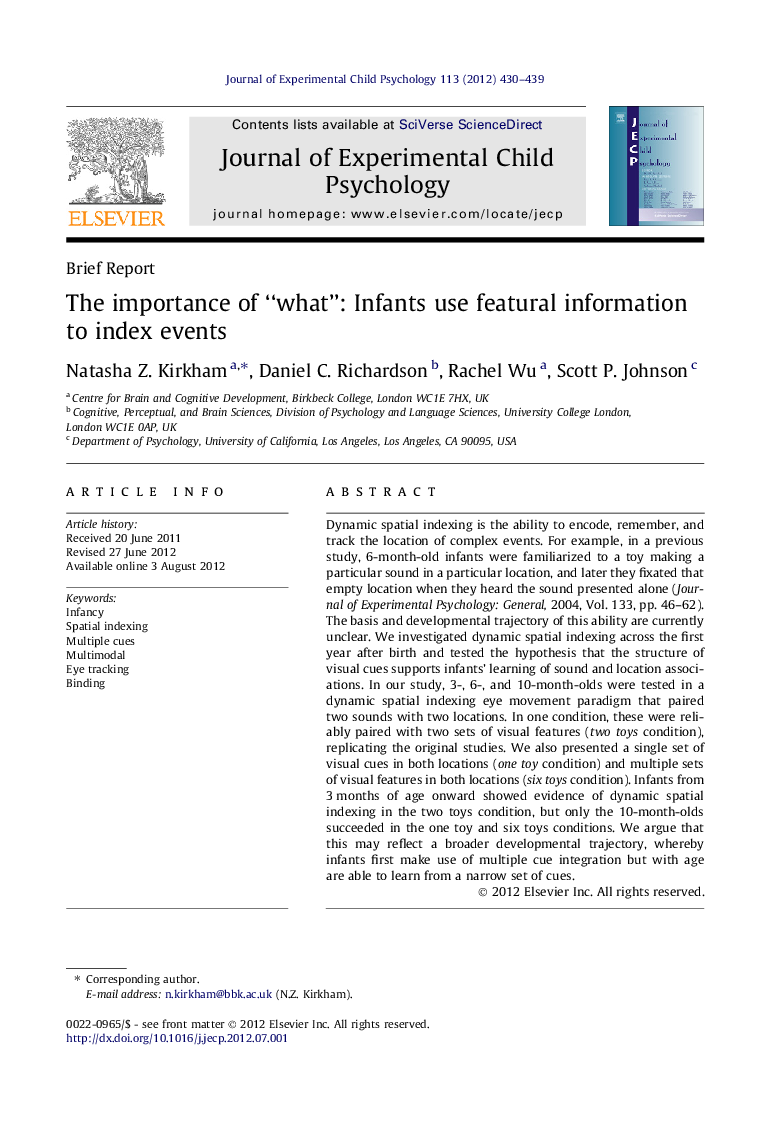| کد مقاله | کد نشریه | سال انتشار | مقاله انگلیسی | نسخه تمام متن |
|---|---|---|---|---|
| 918261 | 919466 | 2012 | 10 صفحه PDF | دانلود رایگان |

Dynamic spatial indexing is the ability to encode, remember, and track the location of complex events. For example, in a previous study, 6-month-old infants were familiarized to a toy making a particular sound in a particular location, and later they fixated that empty location when they heard the sound presented alone (Journal of Experimental Psychology: General, 2004, Vol. 133, pp. 46–62). The basis and developmental trajectory of this ability are currently unclear. We investigated dynamic spatial indexing across the first year after birth and tested the hypothesis that the structure of visual cues supports infants’ learning of sound and location associations. In our study, 3-, 6-, and 10-month-olds were tested in a dynamic spatial indexing eye movement paradigm that paired two sounds with two locations. In one condition, these were reliably paired with two sets of visual features (two toys condition), replicating the original studies. We also presented a single set of visual cues in both locations (one toy condition) and multiple sets of visual features in both locations (six toys condition). Infants from 3 months of age onward showed evidence of dynamic spatial indexing in the two toys condition, but only the 10-month-olds succeeded in the one toy and six toys conditions. We argue that this may reflect a broader developmental trajectory, whereby infants first make use of multiple cue integration but with age are able to learn from a narrow set of cues.
► Infants as young as 3 months can encode, remember, and track complex events.
► Multiple cues scaffold learning in early infancy.
► Young infants learn best when cross-modal cues are redundant or consistent.
► Older infants tolerate reduced information, detecting patterns despite distraction.
Journal: Journal of Experimental Child Psychology - Volume 113, Issue 3, November 2012, Pages 430–439